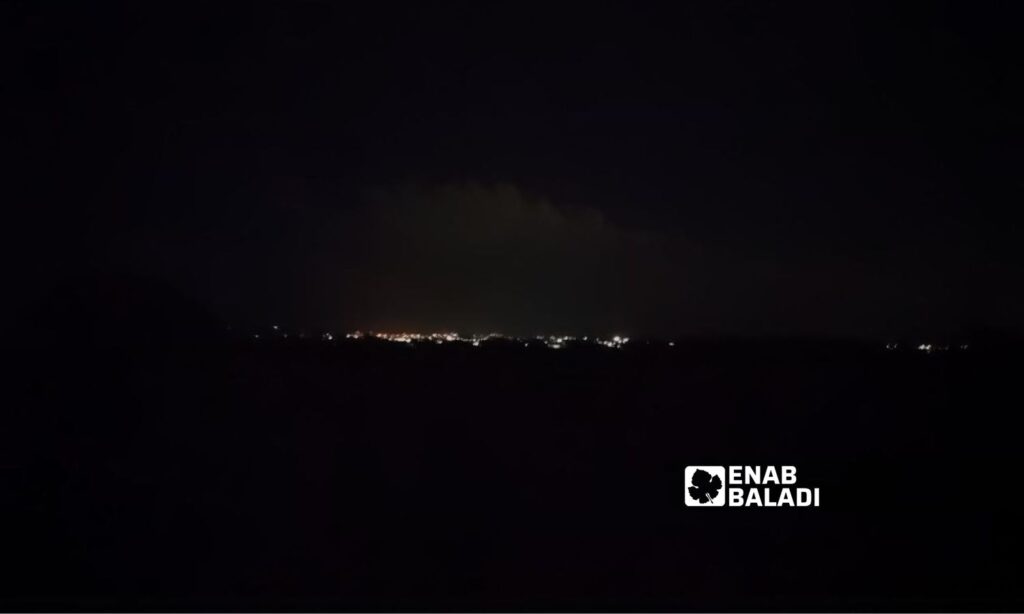Syria is experiencing a significant rise in temperatures amid ongoing issues with electricity and frequent power outages in areas controlled by the Damascus government.
The difficulty in coping with high temperatures in Syrian provinces is exacerbated by repeated power outages, despite the Ministry of Electricity’s announcements about the opening of new stations or restoration operations.
The latest announcement was the opening of the Ghabagheb power conversion station in Daraa, on July 4th, which cost 30 billion and 200 million Syrian pounds, according to the ministry.
According to the Syrian General Directorate of Meteorology, temperatures recorded today, Thursday, July 11th, reached 39 degrees Celsius, with a perceived temperature of 43 in Damascus.
A similar situation was observed in Aleppo, where temperatures reached 40 degrees, with a perceived temperature of 43, while Deir Ezzor recorded the highest temperature at 44 degrees, with a perceived temperature of 46, followed by al-Hasakah at 45 degrees and a perceived temperature of 47.
Latakia registered 34 degrees, Homs 36 degrees, and Hama 39 degrees.
For the full temperature chart in Syria, click here.
Electricity problems increase hardships
According to an Enab Baladi reporter in Daraa, the province is experiencing scheduled electricity outages while the duration of the outages varies between the city and the countryside.
Hanan (45 years old), a resident of Daraa, lost her entire stock of frozen peas and beans after her refrigerator failed due to a battery malfunction caused by the power outage.
Hanan told Enab Baladi that she is less concerned about losing the stockpile compared to her family’s lack of cold drinking water and food preservation. One hour of electricity every five hours is not enough to keep the refrigerator cold.
The family resorted to buying ice blocks, each costing 7,000 Syrian pounds.
The family needs to buy two ice blocks per day, and the struggle continues at night, especially during the current high temperatures.
Hanan’s household has relied on solar energy for years, but the batteries now need replacing, which would cost about $600. Without functioning batteries, the refrigerator can no longer be powered.
Battery insufficiency
In the face of long power outages, some have resorted to running fans on batteries.
Ahmed (20 years old), a resident of Tel Shihab in the western countryside of Daraa, said the battery only lasts a few hours at night and is primarily used for lighting.
Ahmed told Enab Baladi that he plans to buy a new battery after receiving a promised remittance from a relative abroad. He added that he cannot sleep late at night due to the frequent mosquito bites and high temperatures.
Electricity in the city runs for an hour and a half for every four hours of outage, while in the countryside, the outage lasts five hours for every one hour of weak electricity.
As alternatives, residents rely on 12-volt batteries, some of which are charged using solar panels, while others wait for an hour of electricity to recharge the battery.
Prices for locally made batteries have increased. A 100-amp battery now costs one million Syrian pounds, while an imported battery of the same capacity costs around $100.
Most residents opt for locally made batteries because of their lower cost, while a 100-watt solar panel costs $55.
According to an Enab Baladi reporter in Latakia, the city experiences an hour and a half of electricity followed by four and a half hours of outage.
Residents of the city, like those in other areas under Damascus government control, turn to batteries and solar panels as sources of electricity during the summer.
The government offers an interest-free solar energy loan of 35 million Syrian pounds for household energy, which is close to the actual cost.
For batteries, consumers have two options: tubular batteries that endure for about two years at a cost of 4.5 million Syrian pounds each, meaning nine million pounds every two years.
This situation is similar in other regime-controlled provinces like Homs, Hama, and cities on the Syrian coast, where the hours of power outages and access vary based on infrastructure.
The prolonged power outages and inadequate electricity supply across Syria, resulting from the war and damage to the infrastructure since the onset of the Syrian revolution in 2011, have led residents to seek alternative solutions, as it has become clear that there is no hope of restoring the old system.
Similar conditions in northeastern Syria
Electricity in al-Hasakah has been cut off since Turkish airstrikes last January, when electricity was available for four intermittent hours.
The Syrian Democratic Forces (SDF) control areas in northeastern Syria, with the Syrian regime maintaining a security presence in “security squares” and providing some public services.
Before the heatwave, residents in these areas turned to ampere subscriptions, which cost 18,000 Syrian pounds for eight hours of electricity.
Night-time ampere subscriptions run from midnight to noon, costing between $4 and $5.
The suffering increases particularly during the heatwave, as those unable to afford ampere subscriptions have no alternatives, while areas under regime control only have electricity in security squares powered by Qamishli airport, according to an Enab Baladi reporter in the area.
The regime also controls a few neighborhoods in the city center and other parts of Qamishli, inhabited by civilians, with government service institutions such as the governorate building, and faculties of the Euphrates University.
Some nearby neighborhoods rely on private ampere subscriptions, costing around 15,000 Syrian pounds.
Direct damage to Syria’s electrical system due to the war is estimated at around $40 billion, with indirect damage exceeding $80 billion, according to statements by the Minister of Electricity, Ghassan al-Zamal, last May.
Al-Zamal also attributed the electricity problem to a shortage in oil derivatives supply in other statements last May.

